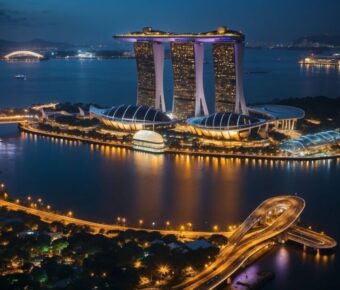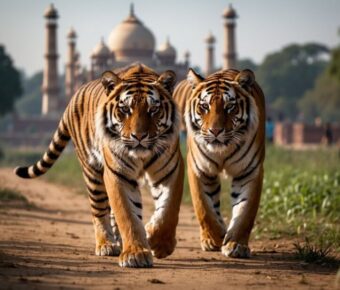Nepal Tour Packages: Discover the Best Travel Deals and Itineraries
Nepal is a country that beckons adventurers and cultural aficionados alike, offering a rich tapestry of experiences set against the stunning backdrop of the Himalayas. Tour packages in Nepal provide travelers with a structured yet exciting way to explore this diverse land. They range from treks along rugged mountain trails to immersive cultural tours in ancient cities. Nepal’s landscape is not only a trekker’s paradise but also a stage for a variety of outdoor adventures, including rafting on whitewater rivers and paragliding above terraced hillsides.
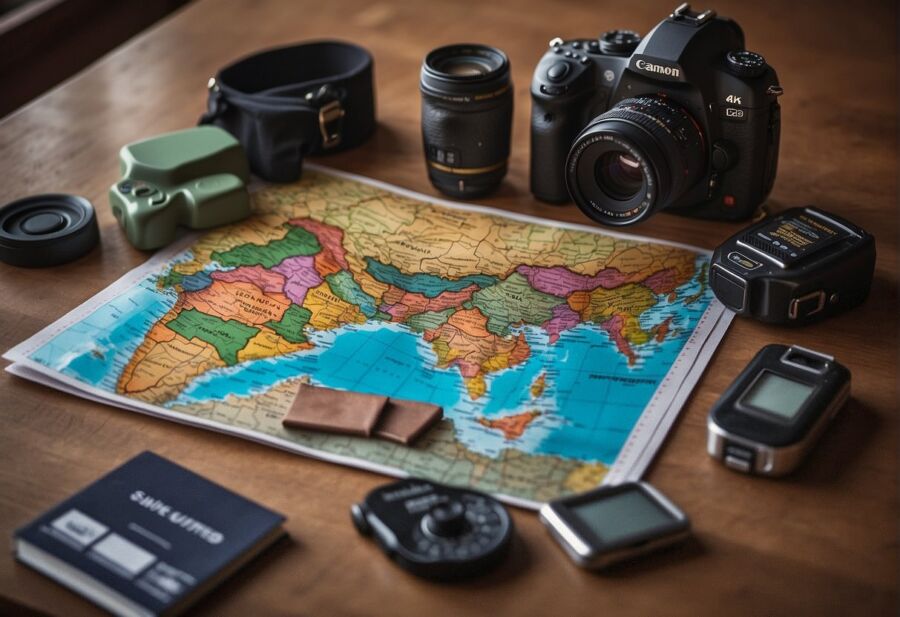
Travelers opting for Nepal tour packages can expect to discover medieval cities like Kathmandu and Bhaktapur, where centuries-old temples and UNESCO World Heritage sites are woven into the fabric of everyday life. Beyond the urban allure, the serene beauty of lakes like Phewa in Pokhara, and vistas from hilltops like Nagarkot, are included in various travel itineraries. Nepal’s tour packages often cater to different budgets, durations, and interests, ensuring there is a suitable option for everyone.
The convenience of organized tours is particularly evident when it comes to logistics in Nepal, where traveling independently can sometimes be challenging due to the country’s rugged terrain and infrastructure. Thus, Nepal tour packages offer the advantages of pre-arranged accommodation, transportation, and sometimes even meals, allowing travelers to enjoy their adventure without the hassle of extensive planning. With expert guidance that often comes with these packages, visitors are well-equipped to have a safe and enriching experience in this majestic South Asian country.
Contents
- Planning Your Nepal Tour
- Best Time to Visit
- Documentation and Visa Requirements
- Preparing Your Itinerary
- Understanding Costs and Budget
- Discovering the Regions of Nepal
- Kathmandu Valley
- Annapurna Region
- Everest Region
- Chitwan and Terai
- Lumbini and Surroundings
- Remote Areas: Upper Mustang and Manaslu
- Cultural Insights
- Religious Landmarks
- Festivals and Traditions
- Local Cuisine and Tea
- Adventure and Trekking in Nepal
- Popular Trekking Routes
- Adventure Sports
- Wildlife and Jungle Excursions
- Accommodation and Dining
- Hotels and Teahouses
- Local Delicacies and Dining Options
- Navigating Nepal
- Transportation Options
- Safety and Health Precautions
- Shopping and Souvenirs
- Handicrafts and Pashmina
- Tea and Spices
- Outdoor Gear and Equipment
- Travel Tips and Practical Information
- Communications and Connectivity
- Local Customs and Etiquette
- Money and Tipping
- Sustainable Tourism
- Environmental Considerations
- Community Support and Local Guides
- Special Interest Tours
- Photography Expeditions
- Spiritual and Wellness Retreats
- Family-Friendly and Educational Tours
- Booking with Tour Operators
- Choosing a Reputable Company
- Custom and Private Tours
- Group Tours and Solo Travel
- How helpful was this article?
Planning Your Nepal Tour
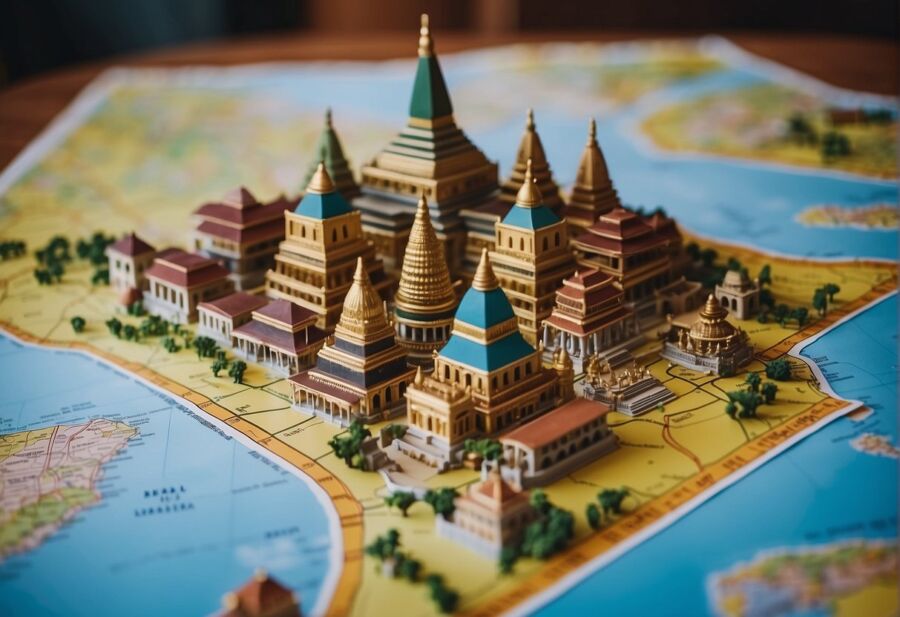
Proper planning can greatly enhance the experience of a Nepal tour, ensuring travelers have a fulfilling journey. Key aspects such as determining the ideal travel time and understanding visa requirements are integral steps in the process.
Best Time to Visit
Nepal’s peak tourism season is during October and November when the weather is clear and dry, offering excellent conditions for trekking and sightseeing. Another favorable period is between March and April. Travelers should note that December, while cooler, still provides clear skies for good mountain views.
Documentation and Visa Requirements
Visitors require a visa to enter Nepal, which can be obtained on arrival at various entry points or from Nepalese diplomatic missions abroad. Tourists should ensure their passport is valid for at least six months beyond their intended stay. It is vital to check for any changes in visa policies before travel.
Preparing Your Itinerary
When planning an itinerary, tourists should take into account Nepal’s diverse offerings. This includes trekking in regions like the Everest Base Camp and cultural tours in cities like Kathmandu. Activities and destinations should be selected based on interests, fitness levels, and travel time available.
Understanding Costs and Budget
The budget for a Nepal trip can vary widely. A basic breakdown is as follows:
| Expense Category | Estimated Daily Cost (USD) |
|---|---|
| Accommodation | $10 – $30 |
| Food | $5 – $15 |
| Transportation | $5 – $20 |
| Activities | $10 – $50 |
Travel packages often provide better deals and hassle-free arrangements. However, independent travelers should be prepared to manage costs for various aspects of the trip, from accommodations to activities.
Discovering the Regions of Nepal
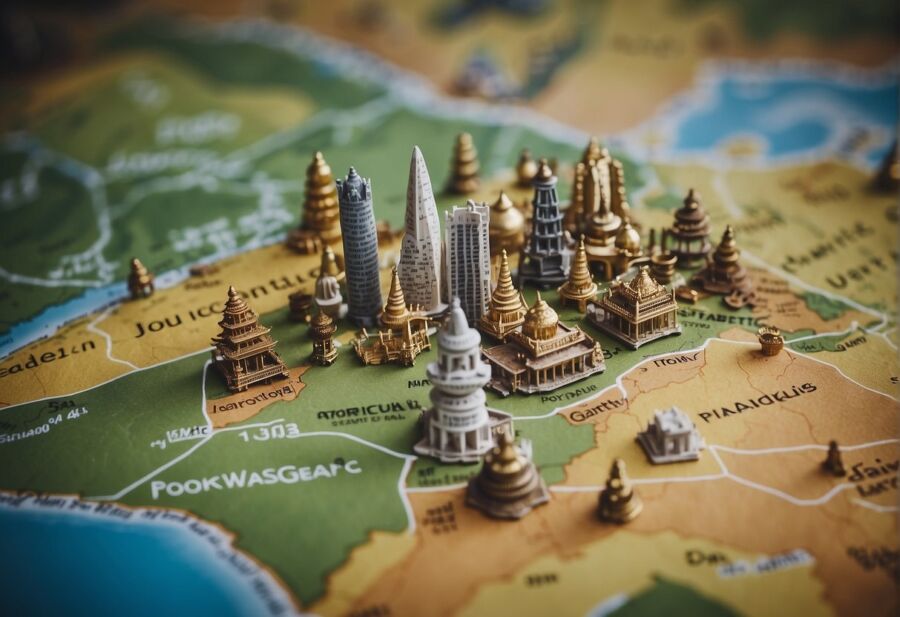
Nepal offers a variety of landscapes and experiences, from the cultural treasures of Kathmandu Valley to the rugged trails of the Annapurna Region. Each area presents a unique aspect of Nepal’s diverse tapestry.
Kathmandu Valley
Kathmandu is the nerve center of Nepal’s culture and history, home to ancient temples, including the 7th-century heritage and bustling traditional markets. Travellers can explore intricately carved architecture and the local Newari culture.
Annapurna Region
The Annapurna Region is famed for its variety of trekking options, with Pokhara serving as the gateway. Here, one can witness the dramatic Himalayan landscapes and engage in activities like paragliding and boating on Phewa Lake.
Everest Region
The Everest Region beckons trekkers who aim to reach Everest Base Camp for a glimpse of the world’s highest peak. The journey is filled with Sherpa culture and high-altitude landscapes unique to this part of Nepal.
Chitwan and Terai
Chitwan National Park in the Terai lowlands offers wildlife experiences, where visitors can spot rhinos, tigers, and a plethora of bird species. This region is a stark contrast to the Himalayan heights, with dense jungles and a warmer climate.
Lumbini and Surroundings
Lumbini, the birthplace of Buddha, is a tranquil pilgrimage site with monasteries and a museum amidst peaceful gardens. The surrounding area teems with historical significance and spiritual solace.
Remote Areas: Upper Mustang and Manaslu
The remote regions of Upper Mustang and Manaslu are less trodden but incredibly rewarding. Their restricted areas preserve a sense of timelessness and offer unspoiled trekking adventures. Upper Mustang’s landscape resembles the Tibetan plateau, whereas the Manaslu Circuit is known for its biological diversity and cultural authenticity.
Cultural Insights

Nepal’s tapestry of culture is woven with spirituality, traditional practices, and a rich culinary heritage. This section illuminates key cultural components which encapsulate the essence of Nepali life.
Religious Landmarks
Nepal’s landscape is dotted with an array of sacred temples and shrines that mirror the spiritual core of its society. Pashupatinath Temple stands as a testament to Nepal’s Hindu roots, drawing devotees from all corners of the world. It is a focal point for Shiva followers and an emblem of the deep-seated religious customs prevalent in the nation. Similarly, Swayambhunath, often referred to as the Monkey Temple, is not only an important Buddhist pilgrimage site but also offers visitors a panoramic view of Kathmandu.
- Noteworthy Religious Sites:
- Pashupatinath Temple
- Swayambhunath Stupa (Monkey Temple)
- Boudhanath Stupa
- Lumbini (Birthplace of Buddha)
Festivals and Traditions
Nepal’s calendar brims with festivals, each echoing the myriad facets of its heritage. Among the most vibrant is Tihar, also known as the festival of lights, which strengthens the societal fabric with rituals honoring humans’ connection with dogs, cows, and crows. Festivals in Nepal are not only a display of devotion but also a communal experience fostering unity and joy among its people.
- Significant Festivals:
- Tihar (Festival of Lights)
- Dashain (Vijaya Dashami)
- Holi (Festival of Colors)
- Teej (Women’s Festival)
Local Cuisine and Tea
The diversity of Nepal’s cuisine reflects its geographic and cultural diversity, with an emphasis on flavorful, well-seasoned dishes. Dal Bhat—a platter of rice and lentil soup—is a staple, often accompanied by seasonal vegetables and spicy pickles. Not to be overlooked is Nepal’s culture of tea drinking; the country’s tea gardens yield a range of aromatic brews, from the robust Ilam tea to the subtle flavors of Orthodox tea.
- Essential Elements of Nepali Cuisine:
- Dal Bhat (Rice and Lentil Soup)
- Momo (Dumplings)
- Thukpa (Noodle Soup)
- Sel Roti (Rice Doughnut)
- Popular Teas:
- Ilam Tea
- Orthodox Tea
- Chiya (Spiced Milk Tea)
Adventure and Trekking in Nepal

Nepal’s diverse landscapes make it a premier destination for adventure seekers and trekking enthusiasts. From the challenging trails of Everest Base Camp to the serene Annapurna Circuit, there’s an experience for trekkers of every level.
Popular Trekking Routes
- Everest Base Camp Trek: This iconic trek takes adventurers through the heart of the Himalayan range, offering breathtaking views of the world’s highest peak. The 15-day journey typically includes stops at Lukla, Phakding, and Namche Bazaar.
- Annapurna Circuit: Renowned for its diverse scenery and cultural experiences, the Annapurna Circuit covers roughly 160-230 km depending on start and end points, encircling the Annapurna massif.
- Ghorepani Poon Hill Trek: A shorter trek, ideal for those pressed for time, offering panoramic views of the Himalayas, including the Annapurna Range. Often completed in 4-5 days, the trek culminates at Poon Hill for a stunning sunrise.
- Annapurna Base Camp: This trek promises striking views of the Annapurna Range and a moderate challenge for trekkers, typically completed in approximately 7 to 12 days.
Adventure Sports
- Rafting: Nepal’s rivers, fed by the Himalayan glaciers, provide thrilling whitewater rafting experiences. Popular rivers include the Trishuli and the Bhote Koshi.
- Canyoning: Canyoning is an exciting water sport that involves descending into canyons using a variety of techniques. It is available in several locations across Nepal, such as The Last Resort.
- Rock Climbing: With numerous natural and man-made climbing walls, rock climbing is gaining popularity. The Kathmandu Valley offers spots like Nagarjun and Shivapuri for climbing enthusiasts.
- Skydiving: For the ultimate adrenaline rush, skydiving over the Himalayas is available, offering unprecedented views of the earth’s highest peaks.
Wildlife and Jungle Excursions
- Chitwan National Park: Experience Nepal’s wildlife on a jungle safari. The park is home to diverse fauna including the Royal Bengal tiger, one-horned rhinoceros, and various bird species.
- Bardia National Park: A less crowded alternative to Chitwan, Bardia offers chances to spot wildlife in their natural habitat, with activities like jeep safaris and bushwalking.
Accommodation and Dining

In Nepal, travelers can choose from a range of accommodation options, from luxurious hotels to cozy teahouses, each offering distinct experiences. Dining in Nepal is an adventure for the palate with a variety of local delicacies to try, often coupled with warm Nepalese hospitality.
Hotels and Teahouses
Hotels: Catering to diverse preferences and budgets, Nepal’s hotels range from 5-star luxury to comfortable budget-friendly lodging. Luxurious hotels, mostly situated in city hubs like Kathmandu and Pokhara, provide amenities such as spas, fine dining restaurants, and exemplary room service. An 8-day tour offering includes accommodation at these high-end hotels, ensuring a restful retreat after a day’s exploration.
- Kathmandu: 5-star facilities with cultural performances
- Pokhara: Serene lake views and premium service
Teahouses: For those trekking through Nepal’s iconic trails, teahouses are the quintessential accommodation. They are simple, functional, and embedded in the local culture, offering a bed, hot meals, and, of course, a variety of tea. Teahouses allow trekkers to relax with basic comforts amidst the Himalayan wilderness.
- Everest and Annapurna regions: Comfortable lodging with food and tea
Local Delicacies and Dining Options
Food: Nepal’s cuisine is as diverse as its topography, blending flavors from its own culinary traditions with influences from neighboring countries. Travelers can savor local dishes such as dal bhat (lentil soup with rice), momo (dumplings), and various curry meals. Both luxury tours and treks offer opportunities to indulge in these local cuisines.
- Dining Experiences: From gourmet dining in upscale restaurants to authentic meals in family-run eateries.
Tea: As an integral part of Nepalese culture, tea is often served during meals and throughout the day. Visitors can taste a variety of teas, including the famous Masala tea, packed with spices and flavor.
- Variety: Masala tea, black tea, and herbal teas available across accommodations.

Touring Nepal involves understanding the available transportation options and taking necessary safety and health precautions to ensure a smooth and secure journey.
Transportation Options
Buses are the most common form of public transportation in Nepal, connecting various cities and towns across the country. They range from crowded local buses to more comfortable, tourist-oriented coaches. Taxis in cities like Kathmandu and Pokhara are readily available and can be hailed from the streets, but they should always agree on the fare before the journey begins as meters are often unused.
For longer distances, domestic flights are available, especially useful for reaching remote locations quickly. Many tours utilize a mixture of these options, providing a balance between efficiency and cultural immersion.
Safety and Health Precautions
Travelers should prioritize their safety and health while navigating through Nepal. Due to varying terrains and road conditions, it’s important to choose reputable transportation services, especially when embarking on long-distance or mountainous routes.
Health-wise, one should consider vaccinations for Hepatitis A, Typhoid, and consider medication for altitude sickness if planning to trek in higher elevations. It is imperative to have travel insurance that covers medical evacuation, as healthcare facilities may be basic outside of major cities.
In cities, it’s advisable to drink bottled or treated water and ensure food is thoroughly cooked to avoid health issues that could derail travel plans.
Shopping and Souvenirs

Shopping in Nepal allows travelers to explore an intriguing selection of handmade goods and local produce. Among the bustling markets and shops, visitors can find unique souvenirs including traditional handicrafts, luxurious Pashmina, aromatic tea, and a variety of spices, as well as specialized outdoor gear.
Handicrafts and Pashmina
Nepal is renowned for its excellent handicrafts, which are reflective of the country’s rich cultural heritage. Tourists often buy intricately designed pottery, metal works, and Thangka paintings. Particularly sought after is Pashmina, a fine type of cashmere wool that comes from the undercoat of the Himalayan goat. Pashmina shawls and scarves are not only warm and soft but also serve as elegant gifts.
- Popular Handicrafts: Pottery, Metal Works, Thangka Paintings
- Pashmina Items: Shawls, Scarves
Tea and Spices
The tea from Nepal is highly regarded, with its unique flavors drawing from the rich soil and climate of the Himalayas. Visitors often purchase Nepali tea as a delightful and aromatic reminder of their travels. Additionally, spices such as cardamom—a highly valued spice in Nepali cuisine—are among the must-buys due to their freshness and quality.
- Notable Spices to Buy:
- Cardamom
- Cinnamon
- Saffron
Outdoor Gear and Equipment
Tourists looking for excellent and cost-effective outdoor gear will find Nepal’s shops well-stocked, especially in areas like Thamel in Kathmandu. From reliable hiking boots to insulated jackets, the equipment available is often comparable to international standards but at more affordable prices.
- Outdoor Equipment:
- Hiking Boots
- Insulated Jackets
- Climbing Gear
In the bustling marketplaces, one can also find a wide selection of shoes, both traditional and modern, that showcase Nepali craftsmanship. Whether looking for practical trekking shoes or something more ornamental, there are options for every preference.
Travel Tips and Practical Information

When traveling to Nepal, tourists should prioritize understanding local communication options, respecting cultural norms, and handling financial transactions with ease.
Communications and Connectivity
In Nepal, major cities offer reliable mobile network coverage and internet access, with Wi-Fi commonly available in hotels and cafes. Travelers can purchase local SIM cards from providers like Ncell or Nepal Telecom for their communication needs. However, connectivity may be inconsistent in remote areas, which could impact travelers and guides during treks.
Local Customs and Etiquette
Nepalese society values respect and courtesy. Greetings are typically done with a slight bow and hands pressed together saying “Namaste.” Travelers should be mindful of local customs, such as removing shoes before entering homes and temples. When it comes to photography, always ask for permission before taking pictures of locals, religious sites, or ceremonies.
Money and Tipping
The Nepalese Rupee (NPR) is the official currency. It’s wise for travelers, including adventure groups like G Adventures’ tourists, to carry cash in smaller denominations for everyday transactions. ATMs are accessible in cities, but fewer in rural areas. Tipping is customary and appreciated, with suggested amounts being about 10% in restaurants and a daily amount for trekking crew and local guides, which can vary depending on the service quality and group size.
Sustainable Tourism

In Nepal, the rise of sustainable tourism is integrating environmental preservation with cultural respect to create travel experiences that are both enriching and responsible.
Environmental Considerations
Sustainable tourism in Nepal places a high priority on protecting the environment while allowing travelers to experience the country’s natural beauty. The use of eco-friendly tours directly supports this, offering packages that minimize the environmental impact. This includes:
- Utilization of renewable energy sources in accommodations
- Encouragement of waste reduction practices like recycling and composting
- Promotion of tours that support conservation efforts, such as wildlife sanctuaries that practice ethical observances
Certain operators also offer carbon-neutral travel options and participate in reforestation and community clean-up projects, directly contributing to environmental sustainability.
Community Support and Local Guides
Nepal’s tourism industry is deeply intertwined with local communities, with an emphasis placed on cultural integrity and economic benefits. Tours are often structured to:
- Support local economies by using locally-owned lodges and eateries
- Engage with community-led projects, ensuring tourism revenue aids in local development
- Employ local guides, who provide authentic insights into Nepal’s traditions, culture, and Buddhism practices
Through this inclusion, travelers not only gain an authentic experience but also contribute to the sustenance of local heritage and the empowerment of indigenous populations.
Special Interest Tours

Nepal offers a multilayered selection of special interest tours tailored for travelers seeking niche experiences. These tours are carefully crafted to dive into the specific aspects of Nepalese attractions, culture, and traditions, ensuring both informative and enriching travel experiences.
Photography Expeditions
Photographers are enticed by Nepal’s geographic diversity, from the majestic Himalayas to the lush Terai plains. Photography Expeditions focus on capturing the natural landscapes and vibrant cultural scenes. Key attractions for photographers include the panoramic Poon Hill, the historic streets of Kathmandu, and the wildlife-rich Chitwan National Park. Participants gain opportunities to photograph a myriad of subjects, from sunrise over the mountains to the ancient traditions of local festivals.
Spiritual and Wellness Retreats
Nepal is synonymous with spirituality and serenity. Spiritual and Wellness Retreats tap into this ancient heritage, offering tranquil experiences such as meditation in monasteries, yoga with Himalayan backdrops, and Ayurvedic treatments. Centers in Kathmandu and Pokhara are hotspots for such retreats, providing an escape that concentrates on mental and physical well-being while allowing guests to immerse themselves in local spiritual practices.
Family-Friendly and Educational Tours
For traveling families, Nepal presents an array of Family-Friendly and Educational Tours that combine adventure and learning. These tours might include educational treks through rural villages where participants learn about local traditions and culture, or wildlife safaris in national parks like Bardia where the conservation efforts for species such as the Bengal tiger are explained. Educational elements are woven into the fabric of adventure activities, ensuring a balance of enjoyment and learning for both adults and children.
Booking with Tour Operators
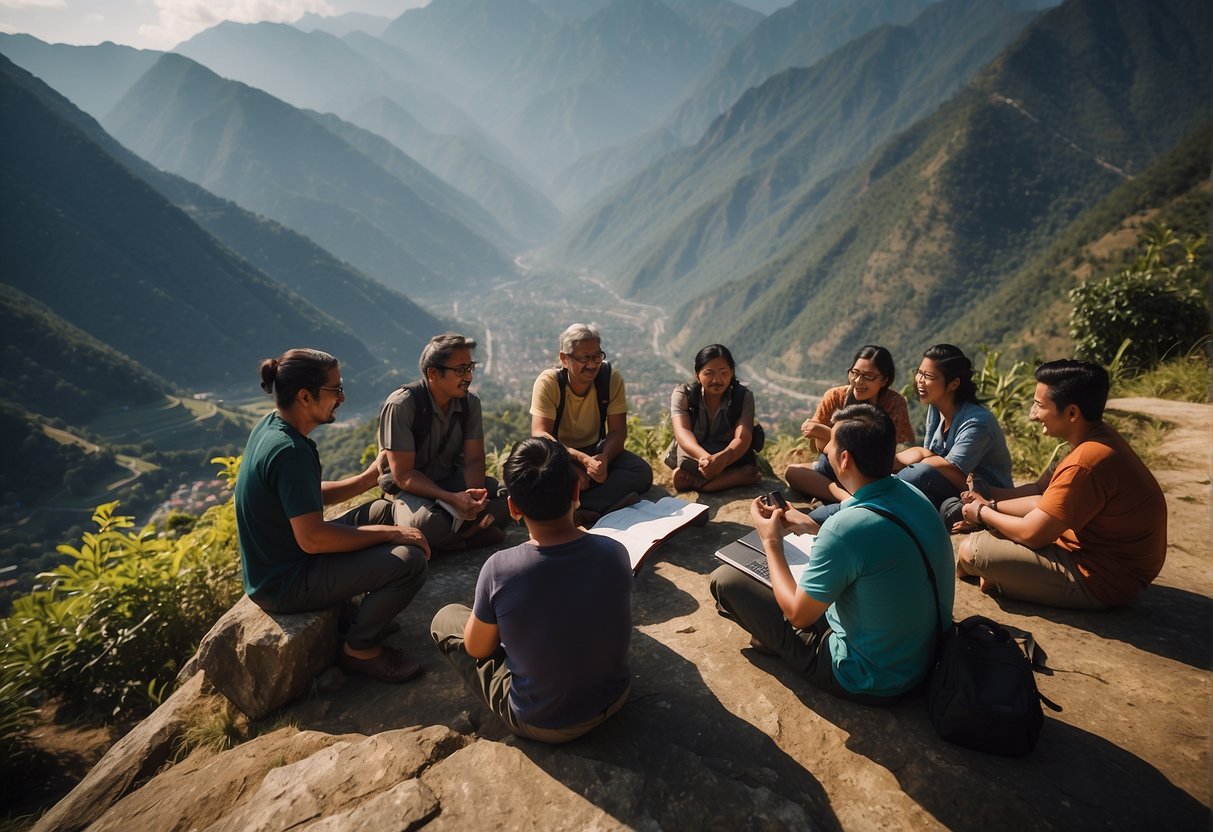
When planning a Nepal tour package, selecting a reliable tour operator is crucial for a smooth and memorable experience. These companies not only offer standard itineraries but also cater to personalized travel styles, be it for individual travelers or groups.
Choosing a Reputable Company
Relevant experience and a solid reputation are key when choosing a tour operator for your Nepal trip. Sherpa Expedition & Trekking Pvt. Ltd., for instance, is recognized for its expertise in organizing a range of activities from classic tours to challenging treks. It is important to verify the credentials and reviews of the operator to ensure a safe and authentic experience. Look for operators that offer classic Nepal tours, demonstrating their comprehensive knowledge of the destination.
Custom and Private Tours
For those seeking a personalized experience, custom and private tours provide flexibility with itineraries tailored to specific interests. Options can range from cultural immersions like the Tale of Three Cities tour to specialized expeditions. When booking, ensure the tour operator can cater to requests for private accommodations, transport, or unique activities that align with your travel aspirations.
Group Tours and Solo Travel
Group tours are ideal for those looking to explore Nepal with like-minded travelers, often leading to cost savings. Operators such as G Adventures provide a structured yet social travel experience. Some agencies also cater to solo travelers by offering the option to join existing groups, which can help to mitigate some of the higher costs associated with solo travel. Check that the operator has a track record of managing group dynamics and safety for all travelers, including those traveling on their own.
How helpful was this article?
We love feedback! How helpful was this article?
Provide your vote!
Drag the slider and make your travel voice heard.
Note: You only get one vote.
Thank you!
Your voice matters in providing authentic travel experiences.
Sorry.
Exceeded the limit of votes from one IP.
